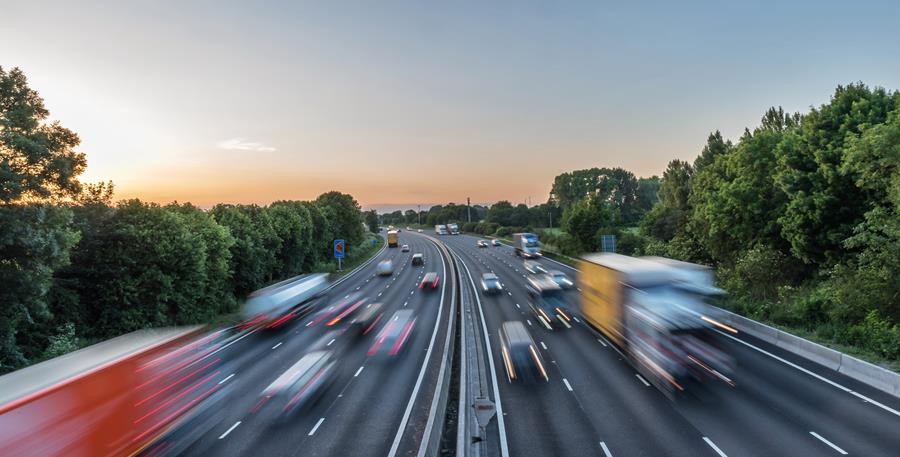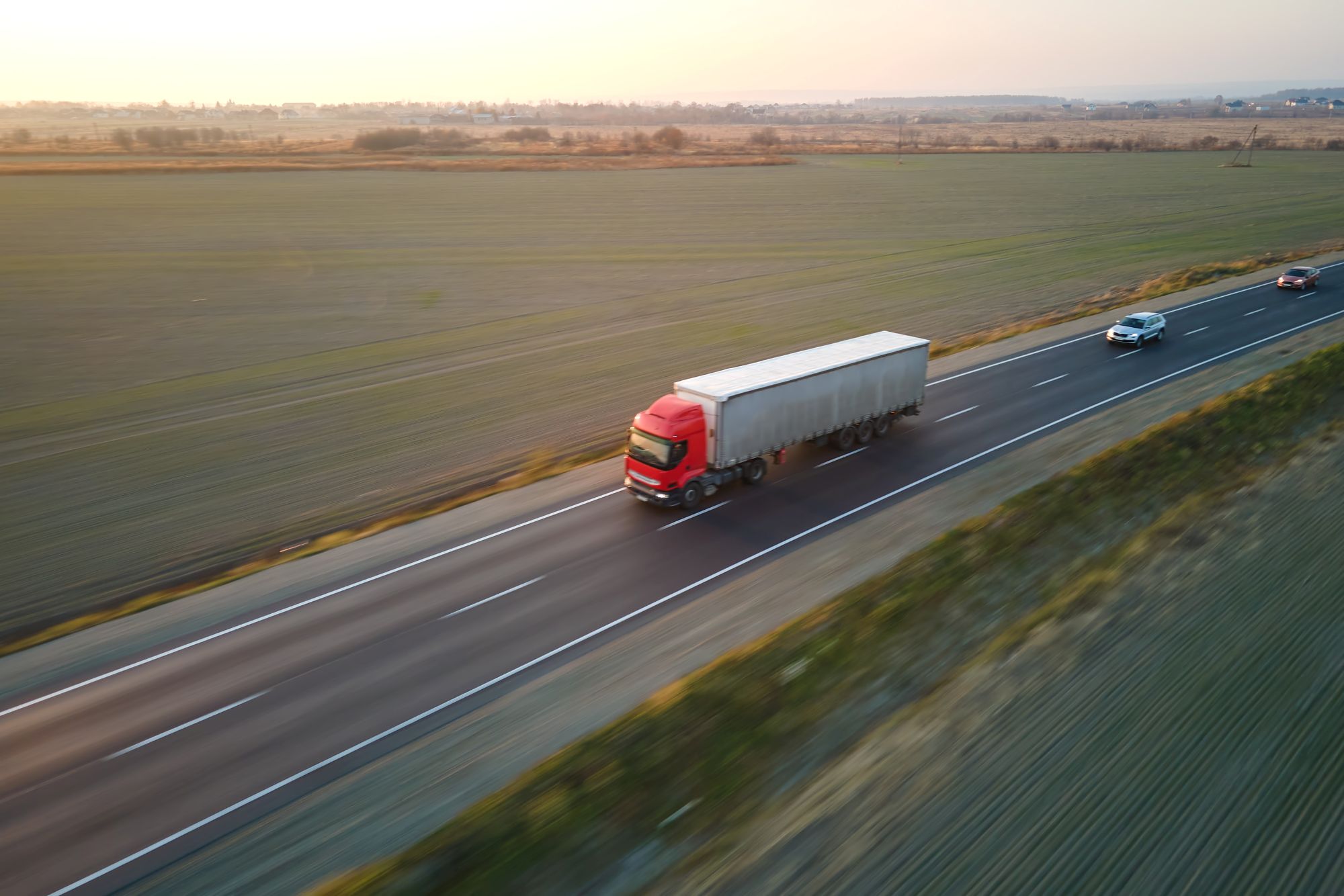
Susie Jones
O caminho para a sustentabilidade: O desafio europeu das emissões no sector dos transportes
Criado: 08/08/2024
•
Atualizado: 08/08/2024
Um relatório de 2024 da Clean Technica revelou que mais de 25% das emissões do tráfego rodoviário provêm do sector dos transportes na Europa - sendo os veículos pesados responsáveis por 85% das emissões (os autocarros e camionetas representam o restante).
Ao ritmo atual, o sector dos transportes representará, por si só, quase metade das emissões de gases com efeito de estufa da Europa em 2030 - as emissões dos transportes na Europa continuaram a aumentar em mais de um quarto desde 1990. As emissões em toda a economia diminuíram - contudo, desde o pico atingido em 2007, o sector dos transportes tem vindo a descarbonizar-se mais três vezes mais lentamenter do que o resto da economia.
Qual é a causa do aumento das emissões de CO2 no sector dos transportes?
Desde a proliferação do comércio eletrónico e dos serviços de entrega ao domicílio, a procura de mais camiões na estrada aumentou significativamente. Consequentemente, o aumento da procura resultou num aumento das emissões de CO2 no sector dos transportes.
Um relatório da [Clean Technica] (https://cleantechnica.com/2024/05/13/eu-wisely-stiffens-road-freight-passenger-emissions-guidance/) sobre a tonelagem do transporte doméstico de mercadorias em diferentes modos (rodoviário, ferroviário e marítimo) revelou que o transporte rodoviário de mercadorias é mais dominante na Europa do que o ferroviário e marítimo, em comparação com outras regiões (EUA e Índia). Embora a China esteja mais dependente do transporte rodoviário de mercadorias, o relatório revelou que o país operava com cerca de 600 000 camiões eléctricos para entregar mercadorias.

Que planos estão a ser implementados na Europa para reduzir as emissões de CO2?
O Parlamento Europeu adoptou a [Lei Europeia do Clima] (https://climate.ec.europa.eu/eu-action/european-climate-law_en#:~:text=The%20European%20Climate%20Law%20writes,2030%2C%20compared%20to%201990%20levels.) para fazer face ao aumento das emissões de CO2. Como parte desta lei, o objetivo da UE de reduzir as emissões líquidas de gases com efeito de estufa até 2030 foi aumentado para, pelo menos, 55% - tornando a neutralidade climática até 2050 juridicamente vinculativa.
Em maio de 2024, os países da UE aprovaram uma lei para reduzir as emissões de CO2 dos camiões. A nova lei exigirá que os novos veículos pesados vendidos na UE a partir de 2040 sejam isentos de emissões, impondo simultaneamente uma redução de 90% das emissões de CO2 dos novos veículos pesados de mercadorias até ao mesmo ano. Os fabricantes devem vender uma grande quantidade de veículos pesados totalmente isentos de CO2 - por exemplo, veículos eléctricos e a hidrogénio - para compensar as restantes vendas de veículos que emitem CO
Que acções podem os gestores de frotas tomar para reduzir as emissões de CO2?
Os gestores de frotas podem adotar medidas para reduzir as suas emissões de CO2:
A travagem brusca, a aceleração rápida e o ralenti podem aumentar o consumo de combustível e as emissões de gases com efeito de estufa - Embora a monitorização do comportamento do condutor possa ser um desafio, a tecnologia de IA pode fornecer feedback contínuo aos condutores e gestores de frotas. Saiba mais sobre como a IA pode ter um impacto positivo na sustentabilidade no sector dos transportes.
As frotas com veículos mais antigos podem mudar para veículos pesados de mercadorias movidos a óleo vegetal tratado com hidrogénio (HVO), hidrogénio ou eletricidade para reduzir significativamente as emissões. No entanto, os gestores de frotas devem ter em conta a distância que os veículos alimentados por combustíveis alternativos podem percorrer e as implicações em termos de custos.
A [Conta SNAP] (https://snapacc.com/) permite aos gestores de frotas reduzir a quilometragem dos desvios - com mais de 600 parceiros de serviços disponíveis para os clientes da Conta SNAP, os gestores de frotas podem planear paragens nocturnas para os seus condutores durante o percurso.
Existem infra-estruturas para carregar veículos pesados de mercadorias eléctricos?
De acordo com um [estudo da PwC] (https://www.strategyand.pwc.com/de/en/industries/transport/the-dawn-of-electrified-trucking.html), até 2030, um terço de todos os camiões na Europa serão eléctricos. Uma vez que as empresas de frotas estão a tomar medidas no sentido da eletrificação, as paragens de camiões em toda a Europa têm de ser capazes de satisfazer a procura de estações de carregamento elétrico.
A disponibilização da infraestrutura terá um custo para muitas paragens de camiões e estações de serviço. No entanto, aqueles que já dispõem de carregadores para veículos eléctricos estão bem posicionados para tirar partido das futuras vagas de camiões eléctricos. Até 2030, as estações de carregamento públicas na Europa aumentarão para mais de 3.600 - A UE apresentou uma lei ambiciosa para o carregamento com o Regulamento de Infra-estruturas para Combustíveis Alternativos (AFIR). O AFIR planeia equipar a rede rodoviária principal com parques de carregamento a cada 60 km - fornecendo energia de carregamento e capacidade de hidrogénio suficientes para que 9% das frotas de camiões e autocarros tenham emissões zero até 2030.
Qual é o país europeu com mais emissões de CO2?
Em 2021, a Alemanha, a França e a Itália foram responsáveis pelas maiores emissões globais de gases com efeito de estufa (GEE) - variando entre [375 000 e 740 000 kton de CO2] (https://ccpi.org/which-european-countries-are-the-worst-climate-polluters-and-why/). No entanto, os países com maiores populações produzem mais emissões de GEE - por conseguinte, a visualização das emissões globais de gases com efeito de estufa fornece uma imagem distorcida.
Uma visão imparcial das emissões oferece uma perspetiva diferente: o Luxemburgo, a Irlanda e a República Checa produziram as emissões per capita mais elevadas da UE em 2021.
Qual é a forma mais ecológica de transportar mercadorias?
O transporte de mercadorias por caminho de ferro é um dos modos de transporte mais limpos, mas também oferece outros benefícios:
Reduz o congestionamento rodoviário, o que contribui para melhorar a qualidade do ar.
O caminho de ferro oferece uma forma mais rápida de transportar mercadorias e elimina os obstáculos ao tráfego pesado.
Os camiões de combustível alternativo são outra forma amiga do ambiente de transportar mercadorias. O óleo vegetal tratado com hidrogénio (HVO) pode reduzir imediatamente até 90% das emissões de gases com efeito de estufa em comparação com o gasóleo normal ao longo do ciclo de vida do produto. A Certas Energy HVO está por detrás da mudança para uma alternativa mais limpa - ajudando as empresas a atingir os seus objectivos de sustentabilidade e a dar passos significativos em direção ao seu futuro líquido zero.



